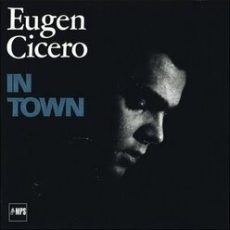
Daily Dose Of Jazz…
Eugen Cicero was born Eugen Ciceu on June 27, 1940 in Vad, Romania, to Teodor and Livia Ciceu, an Orthodox priest and professional singer respectively. He began to play the piano at the age of four and by age six performed a Mozart piano concerto with the symphony orchestra of Cluj. Although he graduated from the National Conservatory in Bucharest, Romania he abandoned a career as a conventional concert pianist. He established his style merging classical and jazz piano, introducing swing harmonies into baroque, classical and romantic compositions, often as spontaneous improvisations.
In 1962, while touring East Berlin, Germany he fled to West Berlin. This allowed him to spend the next two years in Switzerland where he joined the Kindli orchestra of Joe Schmid. After returning to Germany, Cicero produced more than 70 recordings, some of them with the Berlin and Munich Philharmonic orchestras. He appeared on German TV several times and enjoyed much success while touring Japan.
In 1976 he was awarded the Deutscher Schallplattenpreis for his interpretations of Franz Schubert. Returning to Switzerland in 1982, pianist Eugen Cicero, nicknamed Mister Golden Hands, transitioned in Zürich on December 5, 1997 from a cerebral apoplexy at the age of 57.
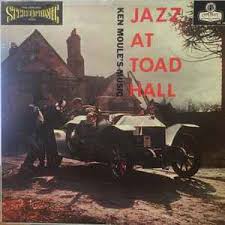
Daily Dose Of Jazz…
Kenneth John Moule was born on June 26, 1925 in Barking, Essex, England and was the only child of Frederick and Ethal Moule. Surviving an early childhood illness, left him with a cadaverous look which went well with his ridiculous sense of humor.
In the Forties Moule played piano with the Johnny Dankworth Quartet before leaving to join Oscar Rabin in 1945. He would go on to perform with Remo Cavalotti for a summer season and Joe Daniels before working on the Queen Mary in Bobby Kevin’s Band, with Ronnie Scott and Johnny Dankworth. He closed out the decade working with several bands including Jiver Hutchinson, Bert Ambrose, Frank Weir and Ken Mackintosh.
During the early 1950s Ken worked with Raymonde’s Orchestra, again with Ambrose and then with Frank Weir on several occasions. 1954 saw him form under his own name a septet, which was comprised of two-tenor, baritone, trumpet and three rhythm group. He resigned from the septet in 1955 and from 1956–1959 he arranged for Ted Heath’s orchestra. During this time he composed the suite Jazz at Toad Hall, and was released on Decca Records in 1958. He worked in Sweden and toured Europe with Kurt Weill’s Band until 1960.
The 1960s saw his return to England and worked freelance as an arranger, especially with Lionel Bart. He was the musical director for the shows Fings Ain’t Wot They Used T’Be and Twang!!. From 1962 he broadcast regularly with his 15 piece orchestra, and later broadcasted and recorded with a larger band called The Full Score. His Adam’s Rib Suite was recorded by the London Jazz Chamber Group in 1970 with Kenny Wheeler on the recording issued on Ember Records.
He scored Cole Porter songs for the musical Cole! performed at the Mermaid Theatre in 1974, and worked with Dankworth again around that time with his London Symphony Orchestra collaborations. He worked out of Germany for part of the 1970s before ill health caused him to move to the warmer climate of Spain.
Pianist, composer and arranger Ken Moule transitioned in Marbella in January 27, 1986, aged 60.
More Posts: arranger,bandleader,composer,history,instrumental,jazz,music,piano
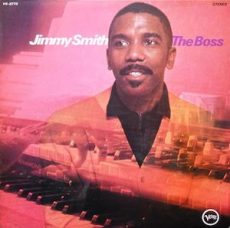
Requisites
The Boss ~ Jimmy Smith | By Eddie Carter
Jimmy Smith‘s impact on jazz in the sixties was immense, influencing every other organist that followed him. In 1968, he came to Atlanta, Georgia and performed at Paschal’s La Carousel, the only nightclub where blacks and whites were welcome. The Boss (Verve Records V6-8770) is a little gem that’s sadly overlooked because of Root Down, Jimmy’s funkier live album recorded four years later. It’s still an enjoyable album that steps into the blues with the assistance of George Benson (tracks: A1 to A3, B2), Nathan Page (B1) on guitar, and Donald Bailey on drums. My copy is the original 1969 US Stereo release.
The set opens with Some of My Best Friends Are Blues, the first of three by Jimmy Smith, which he introduces with soulful charm. George and Donald join in to complete the soulful melody, then George offers the first course of this delectable dish. Jimmy delivers the main course with the succulent support of the rhythm section into a delicious ending. The trio glides into The Boss next, with Smith dispensing the opening chorus. Benson leads off with an extremely welcome solo. Smith takes an adventurous turn in a vibrant, unrestrained display before settling down to reprise the melody and fade gently into silence.
This Guy’s In Love With You by Burt Bacharach and Hal David begins with the trio’s beautiful introduction and melody. George starts the opening solo tenderly; then Jimmy holds the audience spellbound in the following statement preceding the ending theme and George’s slow dissolve. Side Two starts with Nathan Page taking over the guitar duties for Jimmy’s third original, Fingers. Smith states the melody rather simply, then proceeds into a marvelous interpretation with authority. Page is up next and delivers an inspired performance with a fine flow of ideas. Smith adds the exclamation point with a few final comments into the ending theme and graceful fadeout.
George Benson returns for the set’s finale, Tuxedo Junction, by Buddy Feyne, Erskine Hawkins, Bill Johnson, and Julian Dash. This popular song from the swing era is taken at a medium groove for the ensemble’s melody. George’s opening solo is as mellow as a fine wine, and Jimmy closes with a captivating improvisation ahead of the reprise and graceful fade out. Esmond Edwards produced The Boss, and Val Valentin was the man behind the dials of the recording. The sound quality is good, with a “you are there” feeling, placing the listener among the La Carousel audience as the group performs.
If you’re a jazz organ fan like me, I invite you to check out The Boss by Jimmy Smith on your next shopping trip. Jimmy, George Benson, Nathan Page, and Donald Bailey take a splendid ride through a bluesy, laid-back landscape in a live album that, though overlooked and underrated, is delightful to listen to and should be considered for a spot in your library! ~ Root Down (Verve Records V6-8806) – Source: Discogs.com ~ This Guy’s In Love With You, Tuxedo Junction – Source: Wikipedia.org © 2023 by Edward Thomas Carter
More Posts: choice,classic,collectible,collector,history,instrumental,jazz,music,organ
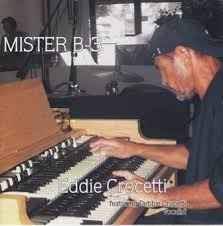
Daily Dose Of Jazz…
Eddie Crocetti was born on June 25, 1943 in Baltimore, Maryland. His interest in music came when he heard a band perform in his father’s bar and he was drawn into the world of professional music. His father immediately purchased him his first set of drums and he began studying drums and piano. By the time he was 14 years old, he was playing professionally for the local musicians of the city. He went on to study the organ.
Eddie married at age 19 and began his family all while entertaining and delighting audiences with his own personal musical approach. For the past 25 years he has been playing alongside Dizzy Gillespie, James Moody, Ira Sullivan, Nat Adderley, Joe Venuti, Allen Harris, Toni Bishop, and more. Beyond jazz he has worked with Robert Goulet, Carole Lawrence, The Smother’s Brothers, The Drifters, The Coasters, The Platters, Fats Domino, Lucy Arnaz, Bill Cosby, Donald O’Connor, Patti Page and Julio Iglesias among others.
In 2001, Crocetti found his soulmate and formed the jazz group Perfect Fusion, which includes his new bride. This led to his release of a jazz organ recording. His wife lent vocals to one of his original works.
Organist Eddie Crocetti currently performs in jazz venues across the United States.
More Posts: bandleader,drums,history,instrumental,jazz,music,organ
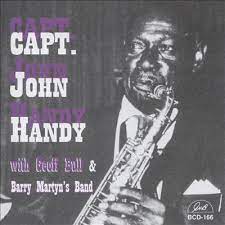
Daily Dose Of Jazz…
Captain John Handy was born on June 24, 1900 in Pass Christian, Mississippi. His father, John Handy Sr., had a family band that included two of his brothers, Sylvester and Julius. Although he also played guitar, mandolin, and drums at an early age, he chose reeds to develop his professional musical career, beginning with clarinet and then migrating to saxophone.
He moved to New Orleans, Louisiana in 1915 and during the 1920s played clarinet working with Kid Rena and Punch Miller. He switched to alto saxophone in 1928. From the early 1930s he led the Louisiana Shakers with his brother Sylvester, and toured throughout the South. In the latter 1930s Handy worked with Charles Creath in St. Louis, Missouri.
Captain John returned to New Orleans in the 1940s, where he performed with the Young Tuxedo Brass Band. Handy was interviewed several times for the Hogan Jazz Archive at Tulane University in New Orleans in the late 1950s and early Sixties. During the 1960s, he played with Kid Sheik Cola and the Preservation Hall Jazz Band and recorded for GHB, RCA, and Jazz Crusade.
Alto saxophonist Captain John Handy, who was part of the New Orleans jazz revival, transitioned in New York on January 12, 1971 at the age of 70.
More Posts: bandleader,clarinet,history,instrumental,jazz,music,saxophone



